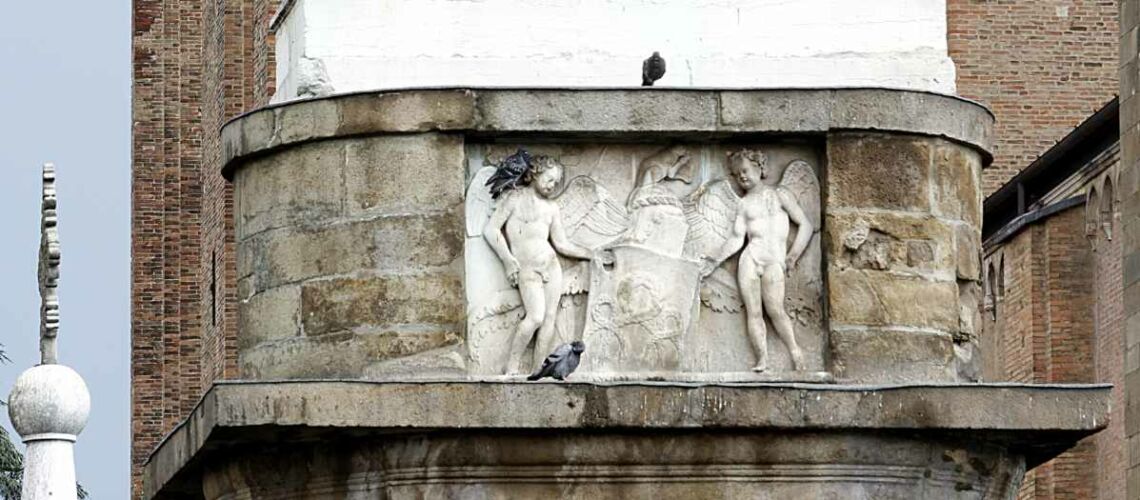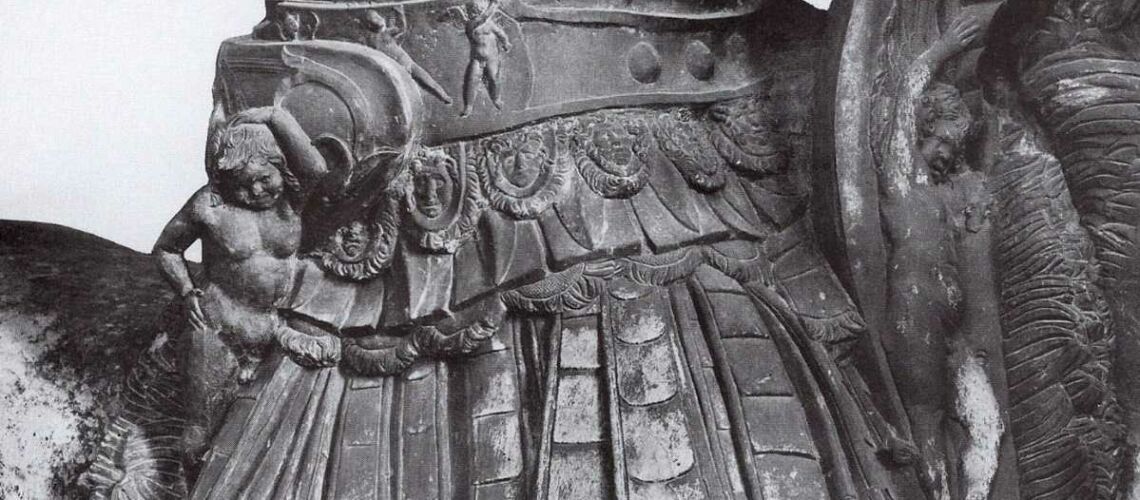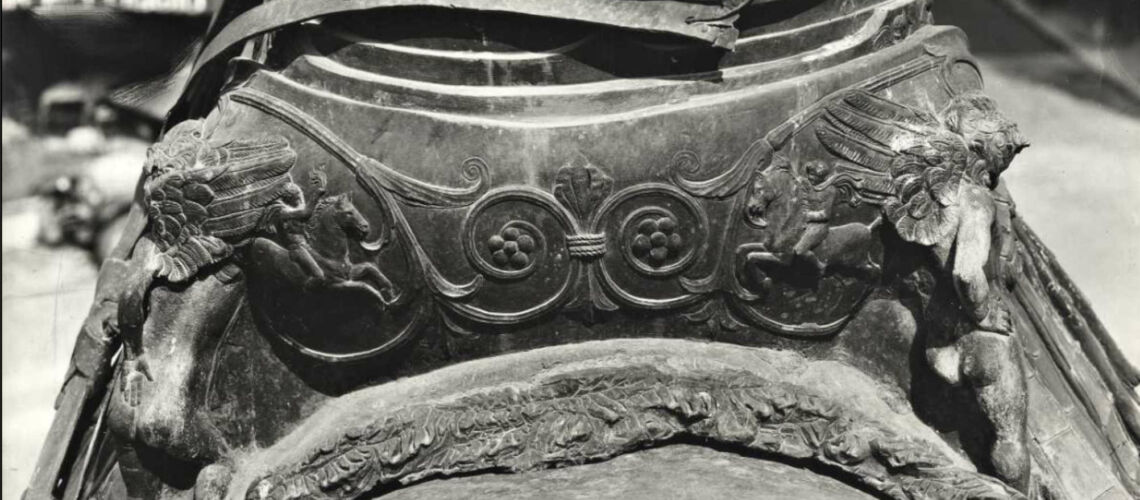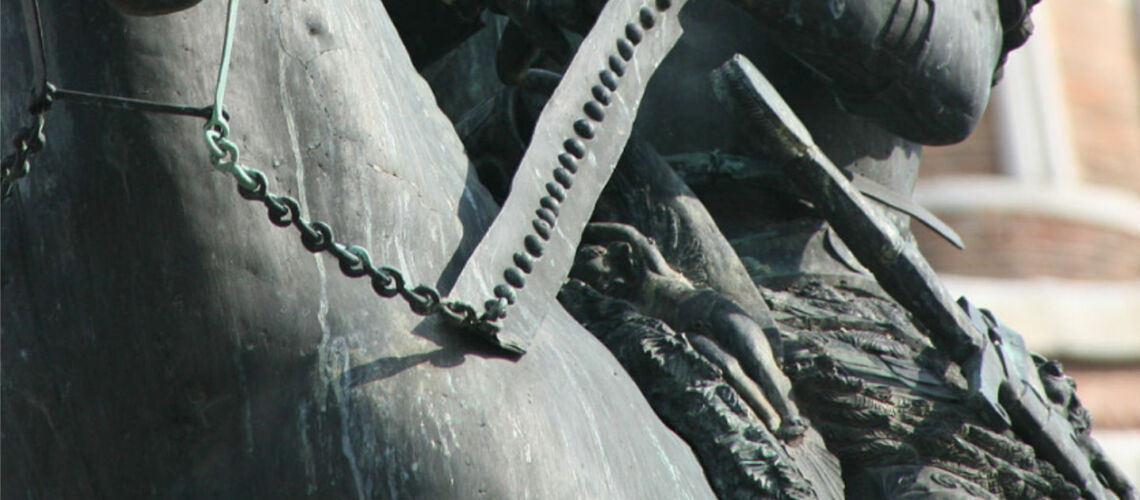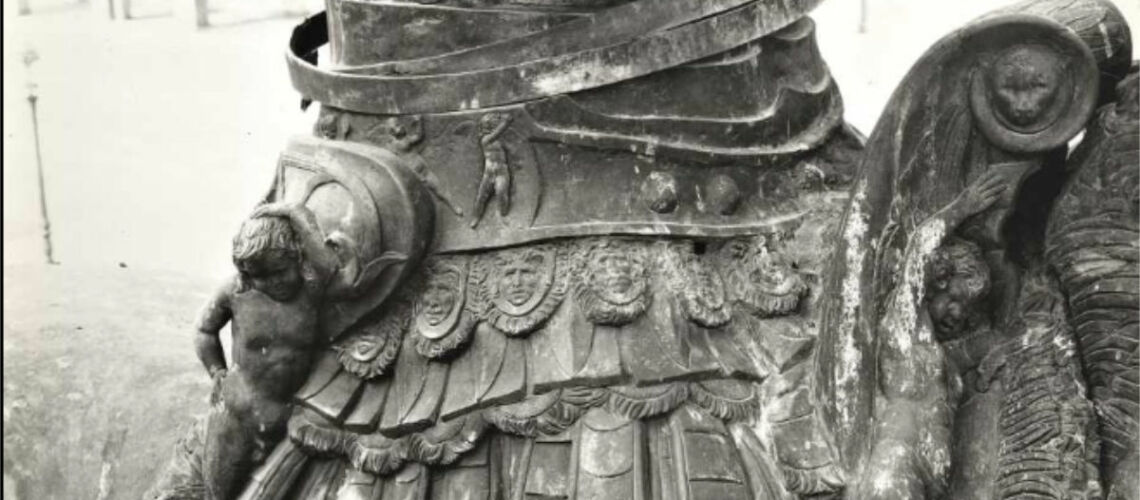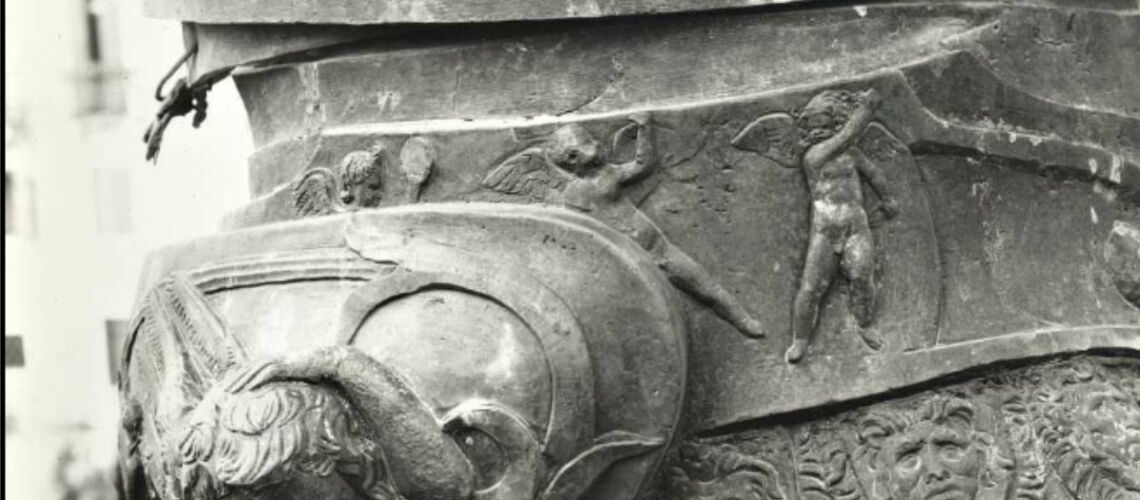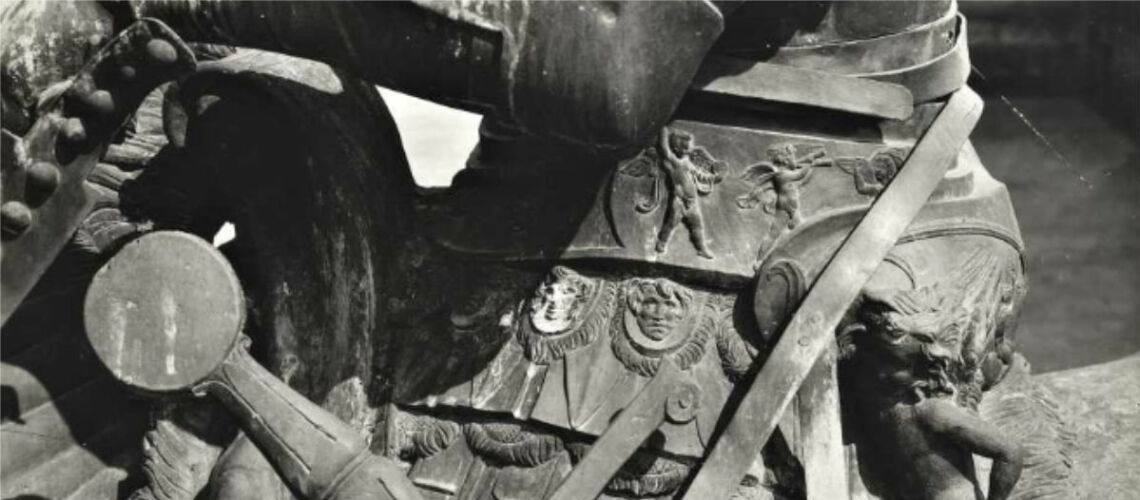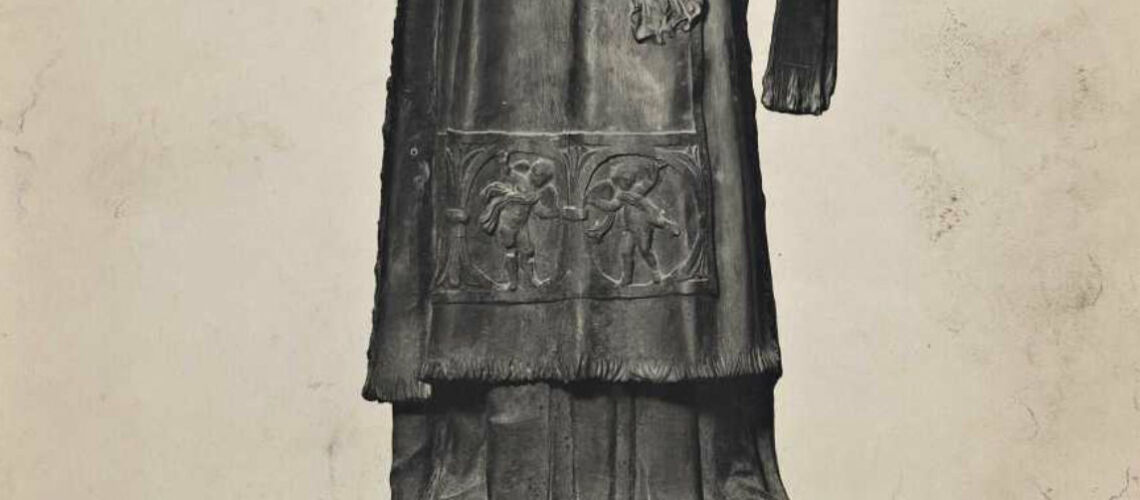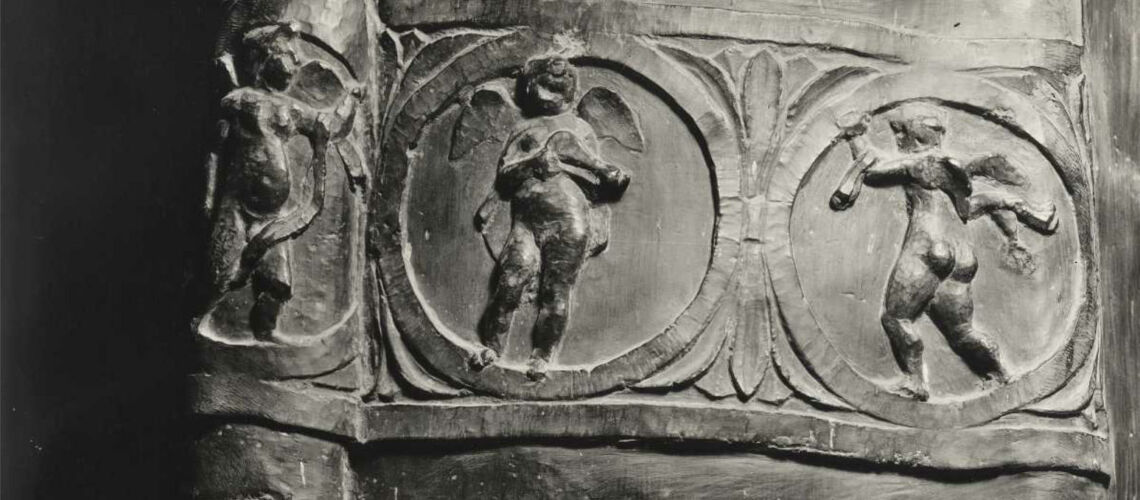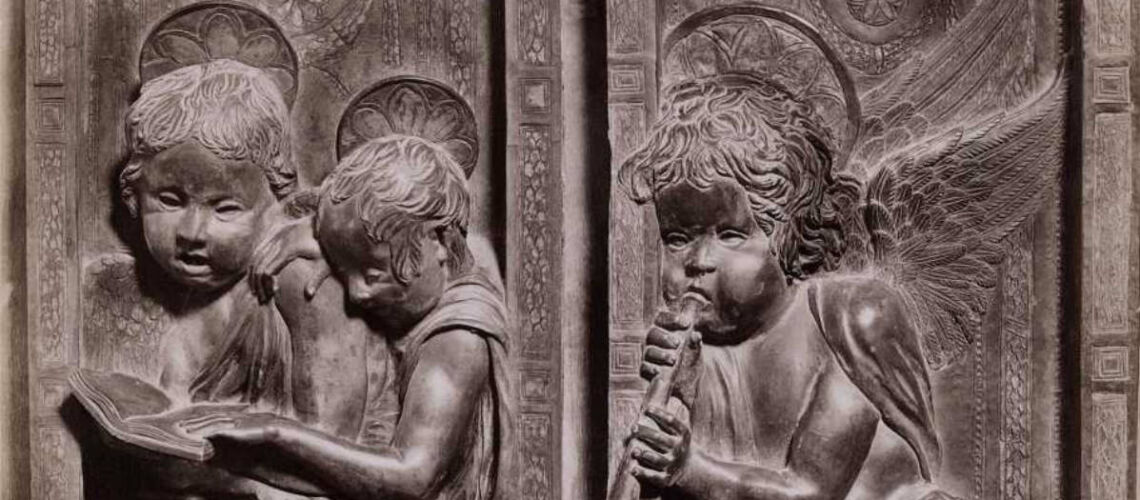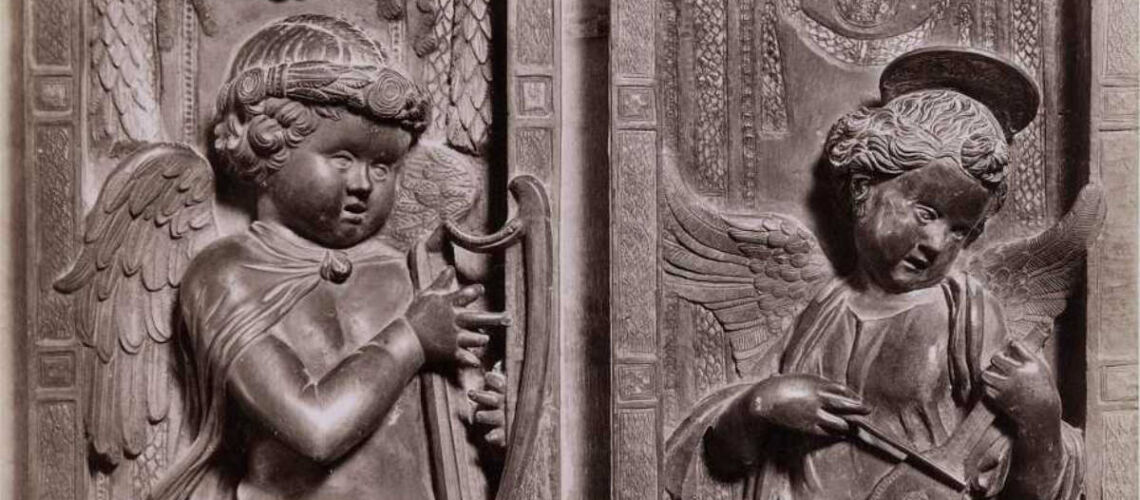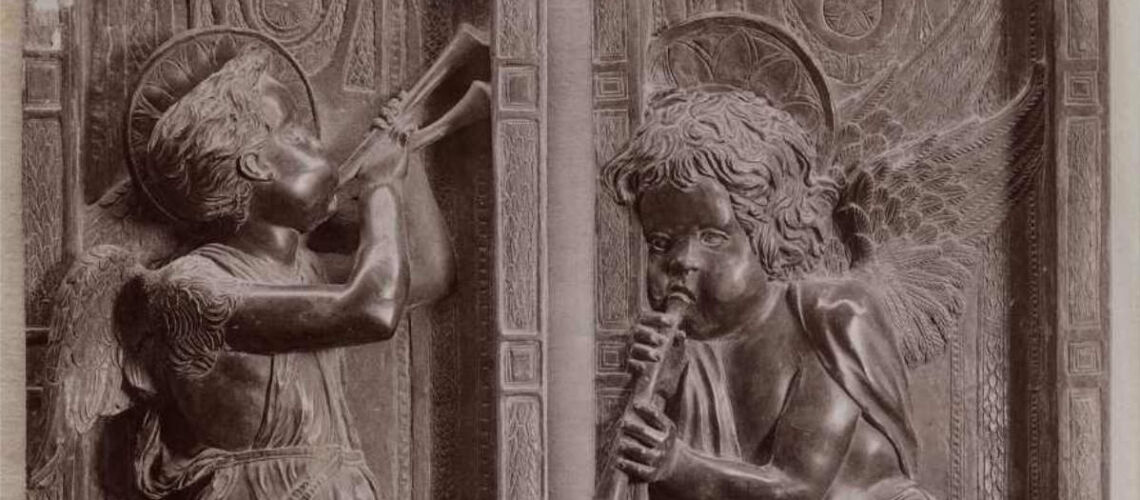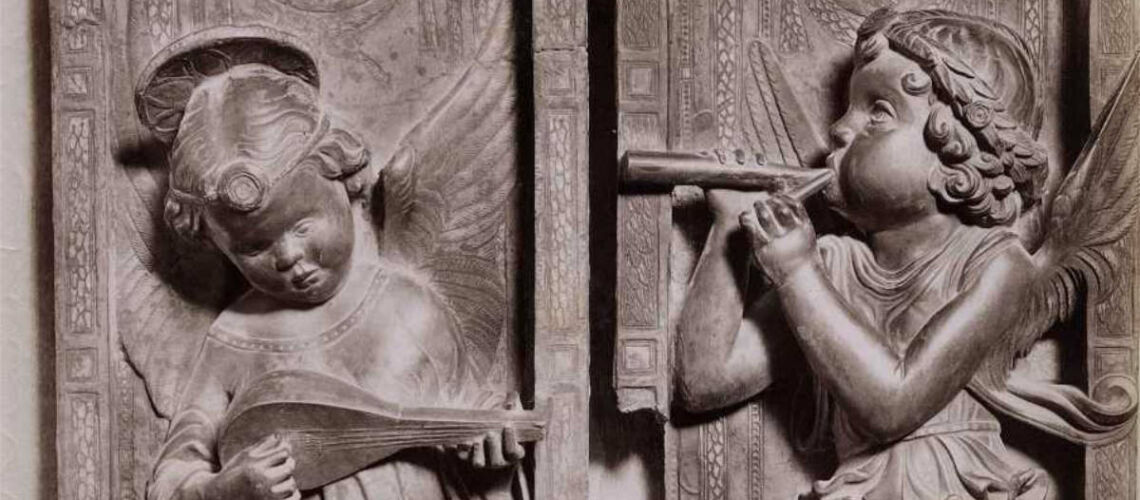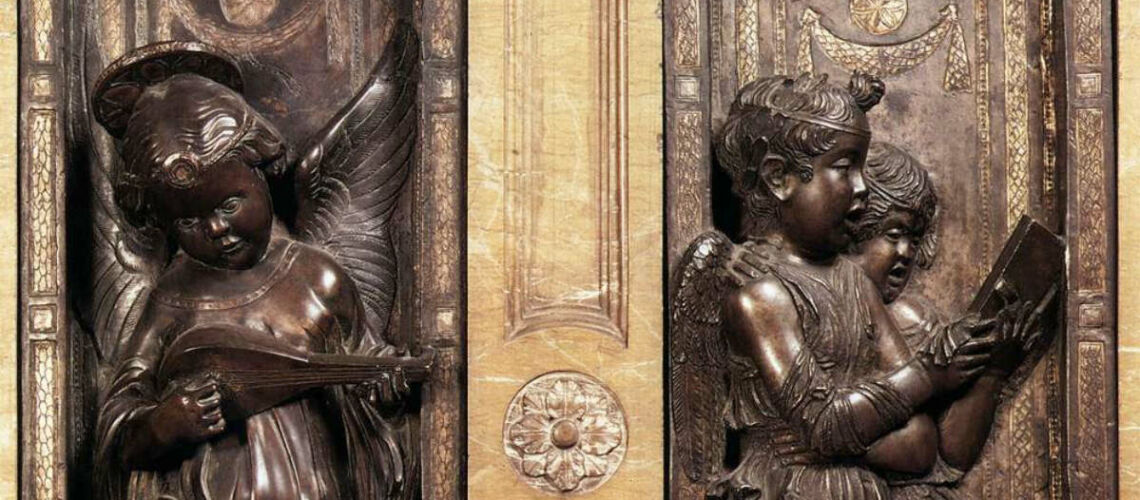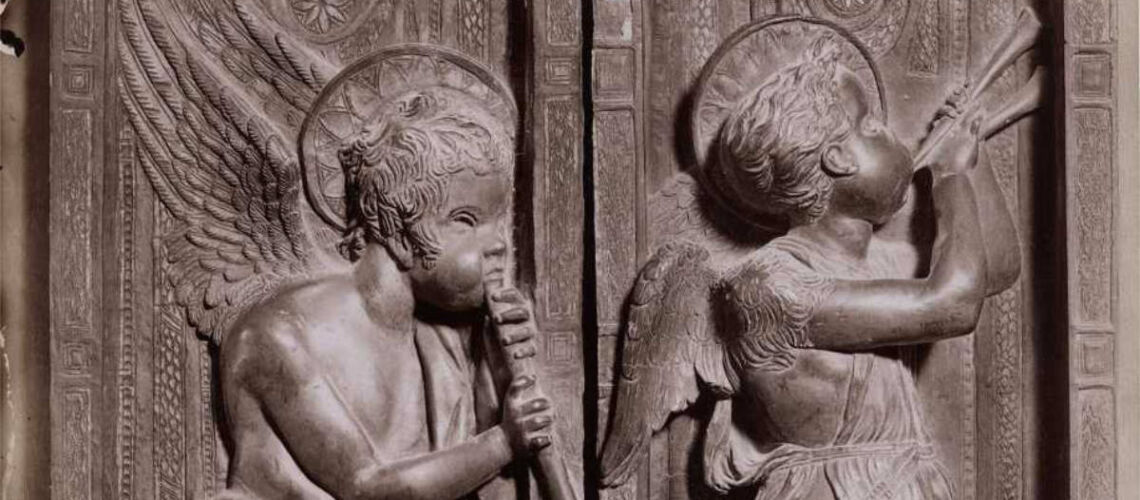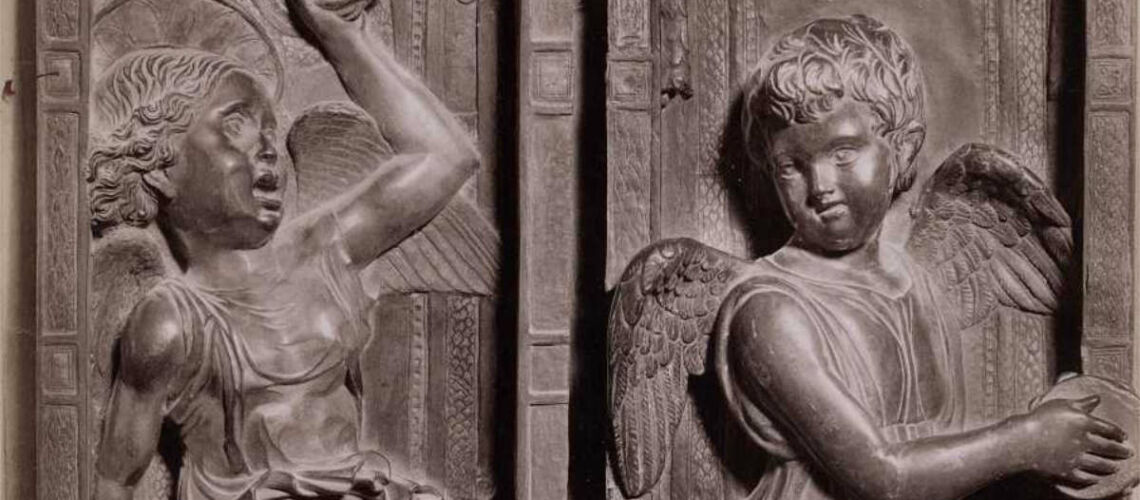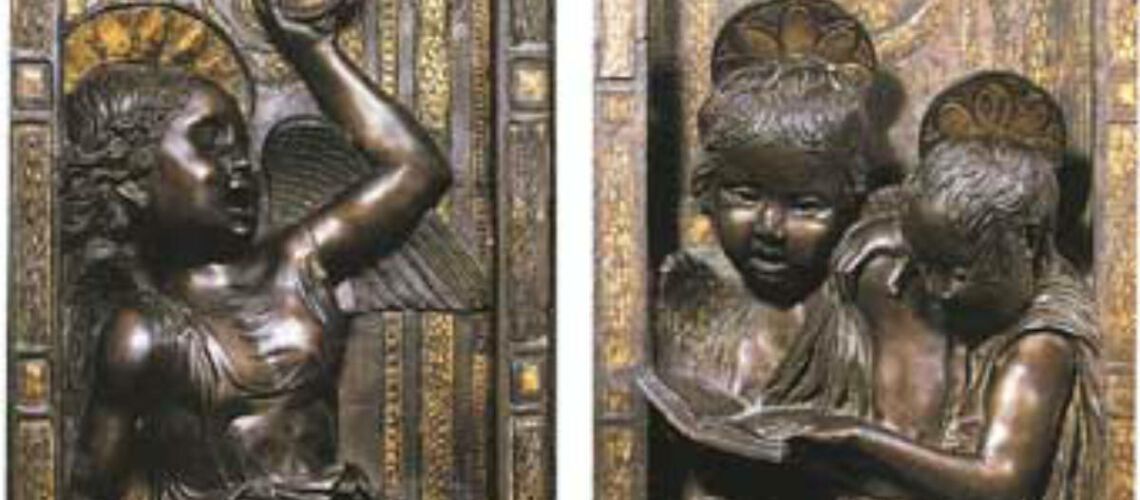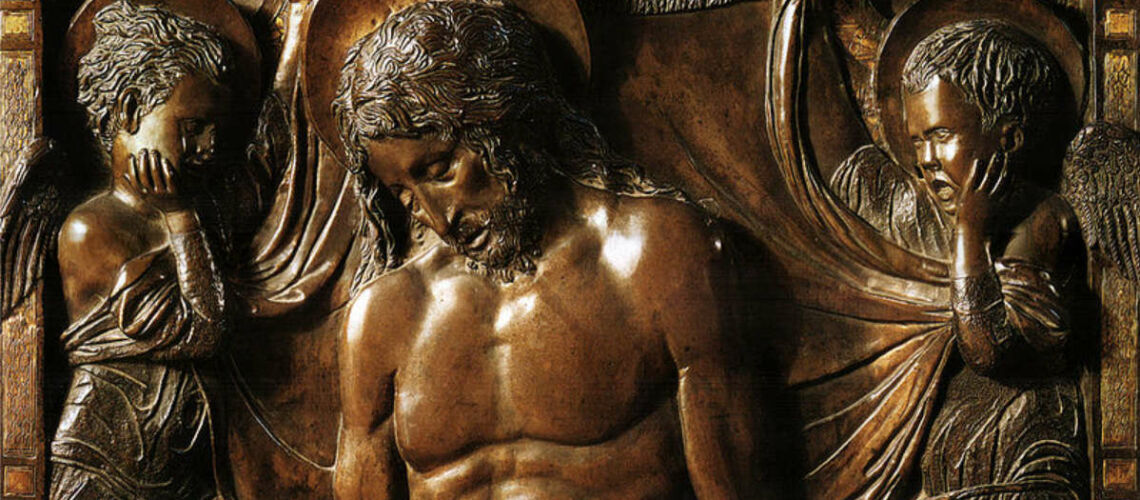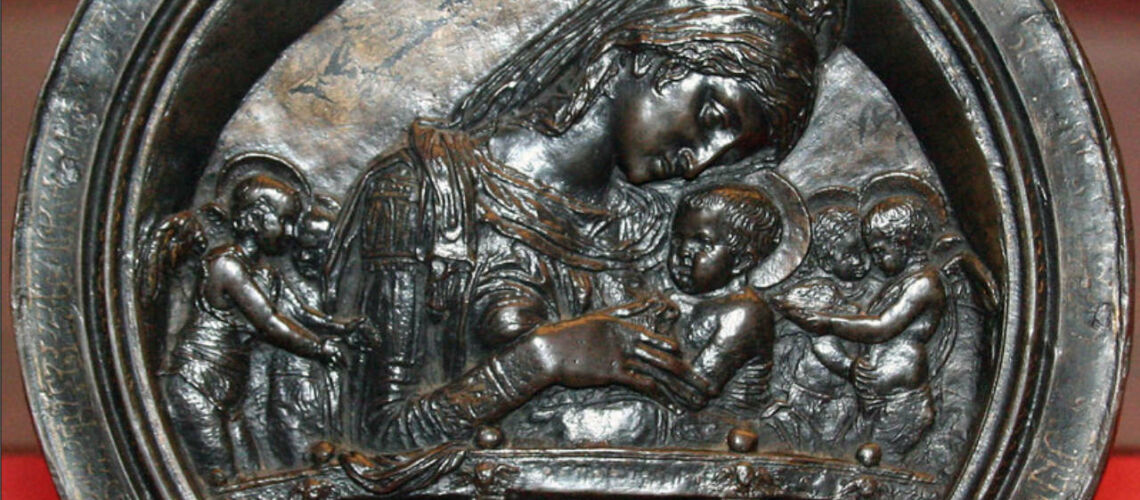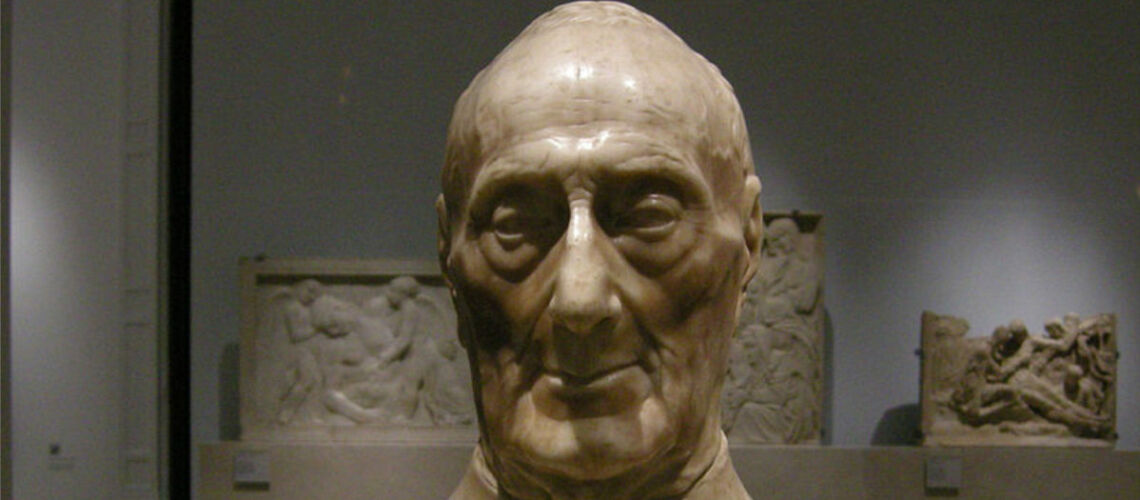Donatello and the Putto in the sculpture
Part VI
The great equestrian monument of the warlord Gattamelata (Erasmo da Narni) that Donatello executed between 1443 and 1453 for Padua is the first large equestrian statue cast in bronze with the lost wax technique from the Roman era until the Renaissance. It was commissioned by the Venetian Senate and paid in large part by the widow of the warlord.
Also in this sculpture Donatello did not renounce the putti: he applied them in relief on the saddle,
on the breastplate and on the belt.
In the “Symposium” Plato writes that it is Eros, god of love, who instills courage to the soldiers, and the putti that Donatello has applied to the war instruments indicate that Gattamelata is under the protection and inspiration of Eros.
Donatello spent the last four years from 1446 to 1453 sculpting and casting the complex of sculptures for the Altar of the church of S. Antonio in Padua, with a group of statues of saints (Ludovico di Tolosa, Prosdocimo, Antonio da Padova, Daniele, Giustina) and a Madonna with Child, four bas-reliefs depicting miracles, and, what interests us most, a bas-relief of the dead Christ and twelve bas-reliefs of musician putti. In 1579 it was decided to replace the Donatellian altar with another larger one using some of the original sculptures. It was inaugurated in 1582, but subsequently was changed in 1691. Few putti appear in the decorations, as in the dress of S. Daniele,
while those of the 12 bas-reliefs are a splendid work executed by Donatello with the help of the disciples (Giovanni da Pisa, Antonio Chellini, Urbano da Cortona, Francesco del valente, Niccolò Pizzolo).
They are classical pagan putti that Donatello has turned into half naked angels with the halo, with clothes that show most of the nudity; the one who plays the flute t is completely naked with the tunic thrown over his shoulders.
Thy have lost the Bacchic attitude of the choir of the Duomo of Florence andof the Prato pulpit and they have a more joyful appearance, except perhaps the one that dances while playing the tambourine, which recalls the movements of the cherubs in the choir.
In the small bas-relief of the dying Christ, two putti-angels on the sides are sorrowful and desperate, and a little less naked than the others.
The altar of Padua inspired most of the artists of Northern Italy who partly adhered to the Donatellian style, in particular the painter Mantegna, and so the typology of Donatello’s putti became common also in Northern Italy from 1450.
Donatello, who was born in 1450 is 64 years old, and engages in two monumental works: Giuditta and Oloferne and the two Pulpits for the Medici church of San Lorenzo in Florence, to which he worked until his death (1466).
Before 1456 he also sculpted the Chellini Madonna, a Madonna with Child and four putti-angels in a small round bas-relief relief. They are half-naked, with wings and haloes, and recall those musicians of Padua. But the whole sculpture is veiled with sadness, the Madonna which prefigures the martyrdom of the thoughtful Son, and even the angels are, the one on the left prepares to hug the Child, the right one offers him bread, symbol of the body of Christ and of his sacrifice.
Donatello did it to donate it to his doctor and humanist Giovanni Chellini in August 1456, as Chellini himself reports in his “Debtors and Creditors Debtor Book”. His bust, sculpted by Antonio Rossellino in 1456, is preserved in the Victoria and Albert Museum.

